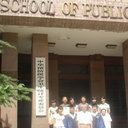Fatty acid desaturase 3 (PsFAD3) from Paeonia suffruticosa reveals high α-linolenic acid accumulation.
Palabras clave
Abstracto
α-linolenic acid (ALA) deficiency and a skewed ω6: ω3 fatty acid ratio in the diet are thought to be a major cause for the high incidence of cardiovascular, inflammatory, and autoimmune diseases. Recent years, tree peony (Paeonia suffruticosa Andr.) with the high proportion of ALA (more than 45% in seed oil) is widely concerned. However, the underlying accumulation mechanism of the ALA in tree peony seeds remains unknown. In this study, comparative transcriptome analysis was performed between two cultivars ('Saiguifei' and 'Jingshenhuanfa') with different ALA contents. The analysis of the metabolic enzymes associated with ALA biosynthesis and temporal accumulation patterns of unsaturated fatty acids demonstrated the importance of microsomal ω-3 fatty acid desaturase 3 (FAD3). Moreover, PsFAD3 gene was identified from tree peony seeds, which was located in endoplasmic reticulum and the expression levels of PsFAD3 were consistent with ALA accumulation patterns in seeds. Heterologous expression in Saccharomyces cerevisiae and Arabidopsis thaliana confirmed that the isolated PsFAD3 protein could catalyze ALA synthesis. These results indicated that PsFAD3 was involved in the synthesis of ALA in seeds and could be exploited by the genetic breeding of new cultivars with high ALA content in tree peony as well as other potential crops.


